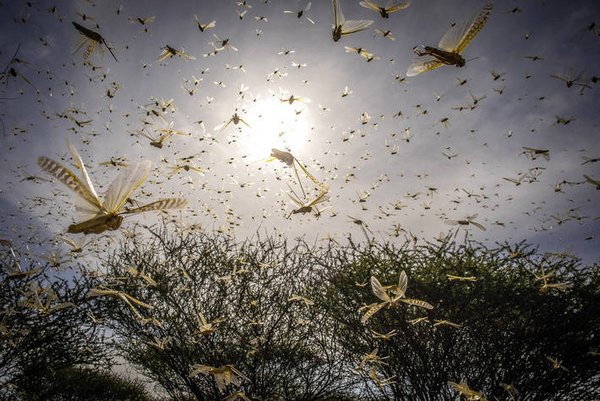 Read this article in French
Read this article in French- Share this article
- Subscribe to our newsletter
FAO makes gains in fight against Desert Locusts
The Director-General of the Food and Agriculture Organization of the United Nations (FAO), Qu Dongyu, announced in mid-May that significant gains had been made in the fight against the desert locust upsurge in East Africa and Yemen. He stressed, however, that more needed to be done to prevent a food security crisis, as the ongoing rainy season was not only providing livelihoods for farmers and pastoralists but also maintaining favourable conditions for locusts to breed.
Releasing FAO's progress report on the locust control campaign in East Africa and Yemen, Qu noted that the UN agency had continued its surveillance and control operations despite constraints resulting from COVID-19 and other challenges.
Preliminary estimates from the UN agency indicate that 720, 000 tonnes of cereal, enough to feed five million people a year, have been saved in ten countries by preventing the spread of Desert Locusts and damage to many more hectares. An additional 350,000 pastoral households have been spared from distress.
"Our gains have been significant; but the battle is long and is not yet over," Qu said. "More people are at risk of losing their livelihoods and worsening food security in the coming months."
A new wave of locusts are expected for June, during harvest time
While swathes of treated land are now relatively free from the voracious pest, the first wave of swarms has reproduced, and a second wave of locusts will transition from juveniles to the young adult stage in June, taking flight at a critical time when many farmers in East Africa prepare to harvest their crops.
The Desert Locust is considered the most destructive migratory pest in the world, and a single swarm covering one square kilometre can contain up to 80 million locusts.
FAO's Desert Locust appeal, launched in January, now covers ten countries: Djibouti, Eritrea, Ethiopia, Kenya, Somalia, South Sudan, Sudan, Uganda, Tanzania and Yemen.
The current upsurge is particularly alarming in the broader Eastern Africa region, with recently released forecasts from the Global Report on Food Crises indicating that over 25 million people will face acute food insecurity in the region in the second half of 2020.
In Yemen, where locusts have been reproducing in hard-to-access inland areas, an additional 17 million people are acutely food insecure. But those estimates were made before the impact of COVID-19 in a region already suffering from acute food insecurity.
"We can and must protect vulnerable people from the impact of multiple crises – conflicts, climate extremes, desert locusts and COVID-19 – which threaten to cause a further dramatic deterioration in their food security," Qu said. "To do this, we need to intensify our efforts further and focus not just on controls but on supporting the livelihoods of farmers and pastoralists so they can get through this."
Funding of 130 million USD for fighting the Desert Locust in Africa and Yemen
Since FAO launched its desert locust response in January, its appeal has attracted USD130 million, the report states. However, funding has concentrated on locust control activities, and much more backing for livelihood support activities is needed.
While locust control and surveillance operations are led by national governments, FAO is providing critical support in the form of pesticides, bio-pesticides, equipment, aircraft and training. So far this year, more 365,000 hectares have been controlled in the ten countries covered by the FAO appeal.
While governments keep expanding their efforts to control the current upsurge with FAO's support, conditions remain very favourable for locust reproduction and will require sustained and geographically expanded efforts, the organisation notes.
The revised version of the appeal to be launched in the coming weeks is expected to also seek resources for Iran and Pakistan, which are also dealing with locust infestations, and for scaling up preparedness efforts in the Sahel region, which might be affected as well.
(FAO/wi)
More information: FAO progress report FAO locust watch





Add a comment
Be the First to Comment